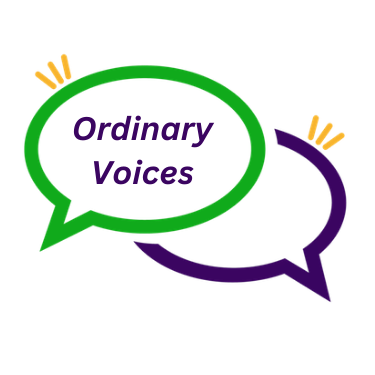How Could He?
The Work To Heal Others Helps Us Heal Ourselves
by Eric Elkin
“Endow the king with your justice, O God,
the royal son with your righteousness.
May he judge your people in righteousness,
your afflicted ones with justice.”
Bobby Schafran's first day of college was not what he expected. Like most 19-year-old kids, he expected to be overwhelmed by new faces. He assumed he would get lost in a maze of foreign surroundings. Much to his surprise, Sullivan County Community College in Loch Sheldrake, NY, was a very friendly campus, or so it seemed.
People he didn't even know greeted him like an old friend. Strangers slapped him on the back and welcomed him back. They said how glad they were to see him again. Some girls he didn't know even kissed him on the lips. This was more than friendly, it was weird.
When people started calling him, "Eddy," he knew something was up. It had to be a case of mistaken identity. Finally, he told someone, "I am not Eddy. My name is Bobby." Stunned by the confession, the person told Bobby he had an identical twin on campus named Eddy Galland. Thus began the unveiling of Bobby's secret identity, the one he didn't even know about.
Bobby Shafran and Eddy Galland were twins separated at birth. They were adopted by different families but were never told about each other. They would have never known had it not been for a random decision to attend the same college campus.
News of their story caught the attention of another 19-year-old boy living in New York. David Kellman read about their meeting in the newspaper. While the story was fascinating, it was the picture that caught his attention. Looking at the two brothers was like looking in a mirror. They looked exactly like him.
“When I tell people my story, they don’t believe it. I guess I wouldn’t believe the story if someone else were telling it, but , I’m telling it and it’s true, every word of it.”
The twins were not twins, but triplets. All three separated at birth. Each adopted into a different Jewish home by the Louise Wise Adoption Agency. This is where the boys' story stops being heart-warming and turns into something twisted and sinister.
The decision to separate the three infants was intentional. Worse, it was done for experimental purposes by a psychologist working in conjunction with the Jewish Board of Family and Children's Services. Strangers in the boys' life had been studying them since birth. The depth of the story and subsequent tragedy is told in the movie, "Three Identical Strangers."
The most disturbing element of the story for me was the psychologist, Peter Neubauer. Neubauer, a Jew born and raised in Austria, studied at the University of Vienna until the Nazi's took control over Austria. He fled to Switzerland to finish his education at the University of Bern. Following the war, he came to the United States.
How could he, a Jewish doctor, who endured one of the most horrible atrocities in human history, do experiments like this on his own people? Unfortunately, it is not uncommon for oppressed people become oppressors when liberated, both in life and in the Bible. It is why the psalmist sings a song of justice and righteousness.
These themes run deep in the Hebrew scripture. However, they can be lost on us in the 21st Century. We tend to think of justice as a person getting punished for doing something wrong. However, more often than not, the Bible understands justice as a person wrongfully hurt being restored to health.
We hope and pray one day, God will come and rule with righteousness and justice. Until that time, we are invited to see all people as being made in the image of God. And in so doing, work to make sure all people are treated well and restored when broken. By doing this, we will actually be healing ourselves.
Click to read Psalm 72: 1-7
Reflection Questions:
How do you understand the word, “justice” when you read it in the Bible?
Have you ever experienced injustice? Have you ever done to someone
Have you ever done to someone an injustice you received?
How can working for the well-being of others help you find healing?

















